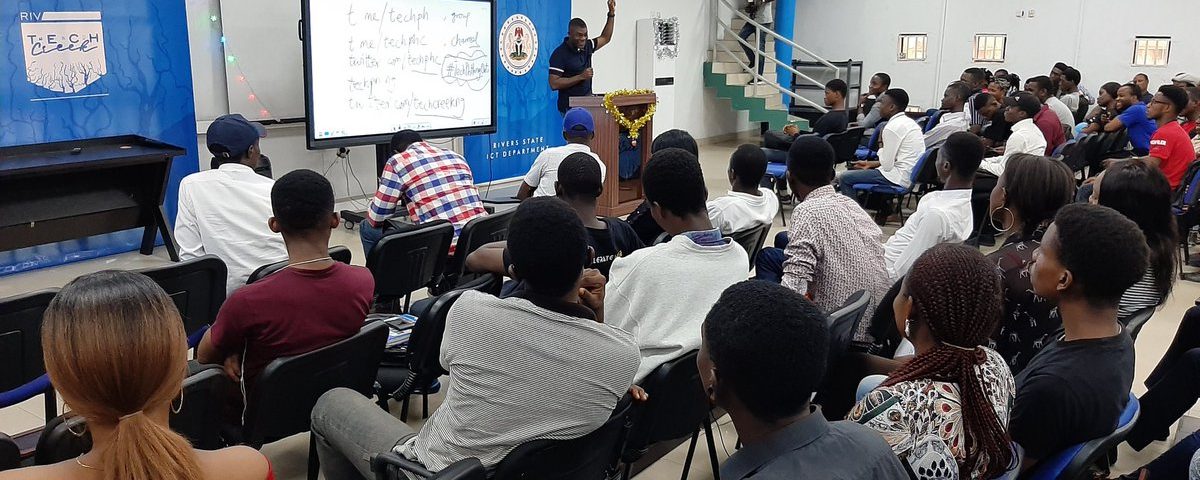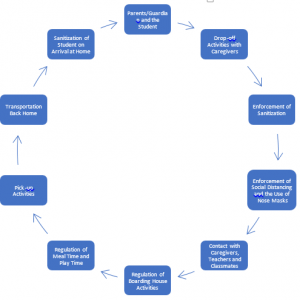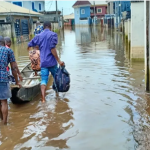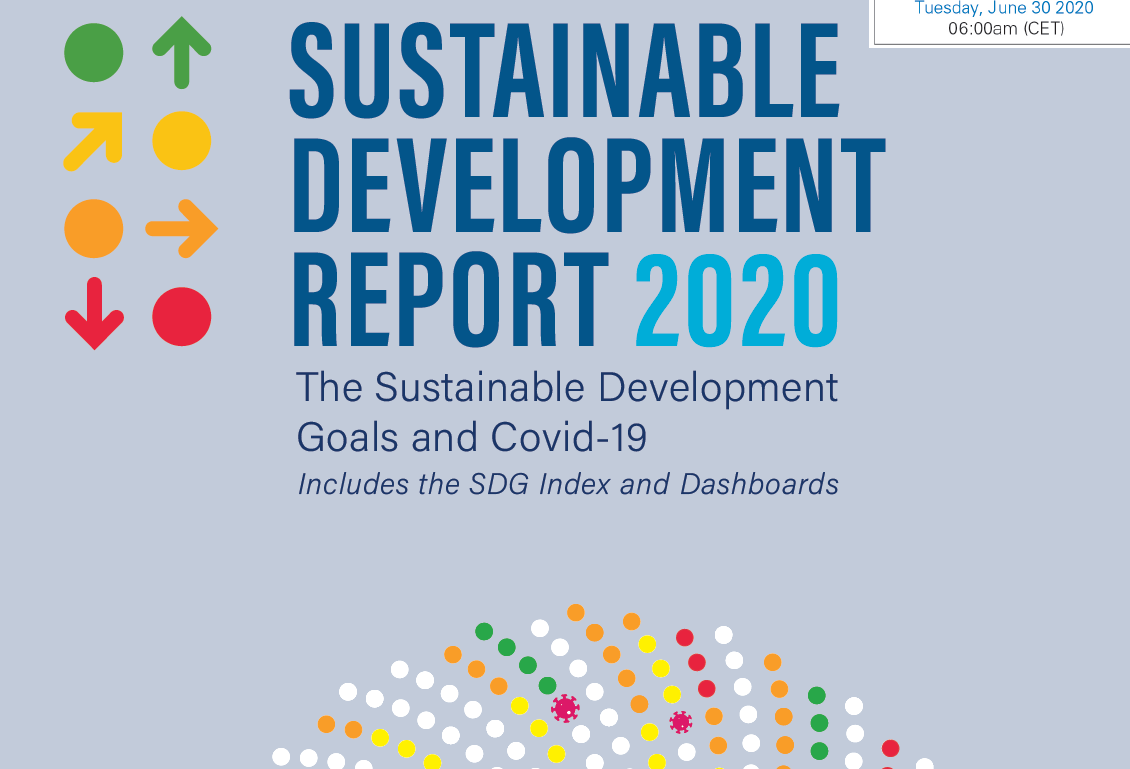
Sustainable Development Report 2020: how to use the SDGs to build back better after COVID-19
July 1, 2020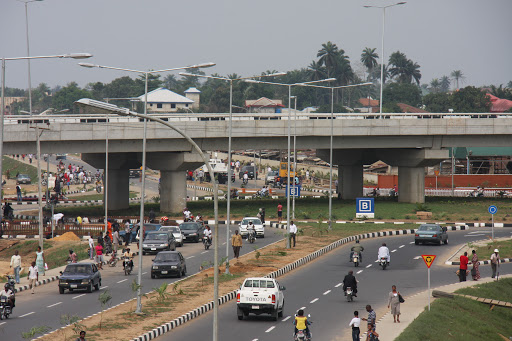
Spotlighting Sexual Violence in Akwa Ibom State – June 28 – July 4, 2020
July 3, 2020
The outbreak of the COVID-19 Pandemic which led to lockdowns, emergency health and food crisis, loss of lives amongst other things has crippled economies across the globe.
The education sector is a major area the pandemic has dealt a blow to. Around the world, governments closed down schools in order to keep children and teachers safe as they all grapple to overcome the health emergency the world has found itself in.
In developed nations, school gates were closed but that did not stop academic activities. However, in most African countries, which includes Nigeria, the closure of school gates led to the abrupt end of academic activities in most schools at all levels of learning. Hence, while our children are ‘enjoying COVID-19 holidays’, their counterparts in other parts of the world continued learning and have made progress. They are able to achieve this feat because they have earlier integrated virtual learning into their educational curricular.
While many individuals may have divergent views about why we as a country have not been able to achieve the same feat as other countries, it is obvious that as a nation we had not invested adequately in education and technology within and outside our schools. That is why once our school gates closed, academic activities ended in most schools.
With about two months gone in the school calendar and nothing tangible achieved, a number of state and private schools have embarked on television and radio lessons, with some states even venturing into e-learning. Also, a number of the private schools across the country have embarked on the use of virtual tools to continue learning even as they brush their way through various challenges ranging from lack of adequate power supply, poor internet access, high cost of data, lack of capacity amongst teachers, parents, etc. Aside from these challenges, most private schools are saddled with the challenge of how to keep up with the cost of other adopted means of teaching (e.g. the virtual learning) and how to pay their staff: both academic and admin. These challenges and much more have led to the call to reopen schools.
This brings me to the crux of the matter in question – what is the cost of reopening our schools in the face of the pandemic without a cure or vaccine? To better understand the cost of reopening our schools, we may need to consider some various points of concern in the value chain. These various points of concern of sending our children to school and having them back home must be thoroughly x-rayed to guide our estimation of the cost involved in the of reopening schools.
For a child to go to school in Nigeria, depending on the class category, the following needs to be considered:
Transportation
After a parent prepares his/her child for school, there is often a mode of transportation involved in moving the child to school; this could involve public or private mode of transportation. In the case of public mode of transportation which over 80% of children use to school, the risk of breaching the safety protocols of COVID-19 may be high. Money changes hands, surfaces are touched, 2 metres physical distancing in the vehicles may be compromised and this could happen to nothing less than 70% of the children, putting in perspective that this is same for the caregivers, teachers and other school staff.
Sanitization of Pupils /Students and Surfaces
The old rule of washing your hands with soap and clean water has become very handy in our fight against the scourge. While it will be very easy for private schools to provide clean water and soap and or sanitizers for their students, it may come at a very huge cost to those in the public schools. The cost of providing this for a minimum of three (3) months may also be quite expensive for the private schools as well.
The schools will have to provide non-contact infrared thermometers to check the temperature of both students and staff of the school before they gain access into the school premises; this equipment does not come at a very cheap price.
What about the cost of sanitizing surfaces in the school environment every hour or after every 30 minutes to ensure that the surfaces are clean; or will this protocol be ignored to save cost?
This may work without much stress in private schools; but is bound to fail in a school like my alma mater where we do not have a fenced and gated school compound. Every part of the school’s perimeter gives us access into the school. So, how will such public schools cope with sanitization and the use of infrared thermometers as measures to keep our children safe? Will the government be willing to ensure that all public schools are fenced and gated to enforce and regulate the various sanitization measures required or will they ignore it because of the high cost involved?
Physical Distancing in School
Can you possibly regulate physical distancing with five or six-year-olds for as long as they stay in school five days in a week? Wait until it gets to their playtime and you will understand the cost it entails….
Furthermore, the typical and recommended class size for a classroom is 56sqm with a student population of between 25 – 35 students. If we are to adopt the social distancing protocol of 1.5m to 2m, it means that this same class size can only accommodate half or less than half the normal class population. What happens to the rest of the class? Perhaps we could batch the students into morning and afternoon classes; this may reduce the time the students will have to spend in the class for lessons to enable the school accommodate all the spill over students caused by the social distance protocol. On the other hand, will teachers be willing to receive the same salary for longer hours? Maybe it could be taken as part of their sacrifice; this too will be at a cost … Or will private and public schools commence expansion works in their schools to ensure that social distancing is taken into consideration as they maintain the same class size? I leave you to imagine this same scenario in public schools where we have over 50 students cramped in a classroom.
Of course, our assembly meetings may no longer be feasible; even the boarding house system especially in the public schools may no longer be considered as more hostels will be required with additional hostel masters and mistresses to enable the students adhere to all the required safety protocols. And if this is too much trouble, the hostels may be closed within this period; what then will be the fate of those students who reside outside the location of their schools? Perhaps, to handle this, we can ensure that all students are properly tested and confirmed negative before they are let into the hostels. Hmmm…we know that this will not suffice and it will come at a cost too!
Sustainable Development Report 2020: how to use the SDGs to build back better after COVID-19
Face Masking
The use of facemasks is one of the vital protocols established and it has been made compulsory in all public places; this will include schools if they reopen. How can you effectively manage a facemask on a five or six-year-old within a classroom environment? Will there be special face masks for these group of people? Will it be convenient to have masks on all through classes or will there be time to observe face mask breaks? What about our children with respiratory challenges? Will there be some exemptions for them? Will the exemption be risky for them? What about when the facemask goes bad or would not stay on the face of the child; whose place is it to ensure it does stay in the appropriate position. And in our public schools, how do the students handle the crowded or poorly ventilated classes with facemasks on?
Playtime
For the children in lower primary, every time is playtime! However, for those in the upper primary and secondary schools, they may observe their playtime at the scheduled playtime or break periods. At such times – except for video games and the likes – how possible is it for children to play without physical contact? Most schools may have to incur extra cost to maintain or sustain a good playtime for the children. May be the use of hand gloves will help; but I wonder where their face masks will be at that time in question. Your guess is as good as mine, the play quality will drop and there will be cost incurred to keep close to a normal play session.
Teachers and caregivers may be deployed during such play sessions to regulate and guide them through this period; this may make the play ‘less play’ but safe enough to gain the confidence of parents to bring their kids to school.
And for the type of public school I attended, playtime could be the period when all protocols may be completely forgotten, and the damage could be done. To allay my fears, they may ban all field and track related games, but what about our classroom running around? Who will monitor the senior boys in secondary schools? Which teacher will stay around to regulate their playtime or break period?
Mealtime
Food time is always an exciting time for children. How do we handle it? The table surfaces have to be cleaned and perhaps sanitized before they commence their meals; they will have to take off their facemasks and keep it safely before they start eating. For the younger ones, this could be a vulnerable period if not well handled as all the parts of the body through which the virus can be contracted are now left open. I guess the minders in the private schools will be on top of their game to ensure that our children do not fall prey.
For my brothers and sisters in the public school this is when we go to the cafeteria or mini markets to buy food. We become twice as vulnerable as our peers in private schools because we will be interfacing with third parties – the sellers of the food; this will also involve the exchange of money. What about the surface of our eating tables or the environment of eating…will the government provide all that will be required to sanitise the public schools? At what cost will it come to us? I hope our principals and teachers will know the importance of their stewardship and ensure that these sanitizing materials, when handed to them, are to serve the purpose; they are not to be resold or used for their personal benefits.
A cycle chart showing the various points to evaluate if schools were to reopen during this period of the pandemic.
The question now is, do we have public schools and private schools that can handle these areas of concerns effectively without defaulting; and at what cost will that come to all the stakeholders (parents, government, etc.)?
Conclusion
According to Paulo Coelho, “everything in life has its price”. Whether you decide to make things better or leave them the way they are, there is always a price. Often the price (cost) attached to things is based on individual or societal needs.
The economy must reopen as the lockdown has an untold cost on all of us. However, it will be in our best interest to begin to look out for less risky and cost-effective ways of reopening our economy. The use of technology is one sure way of getting things done. It has its inherent cost, but it may not be as expensive as blindly reopening sectors without taking full stock of what it may cost to reopen it. I hope our policy makers will rise to the task by counting the cost as they develop an action plan for the return of our children to school.
The use of virtual classes via television, radio, satellite, online (internet) and even DVDs (for those who cannot go online) is the way to go. This may not meet all our learning objectives, but it will reach out to over 80% of student population in Nigeria and meet over 60% of their learning needs without putting our children and their teachers in harm’s way!
This could help us strengthen our education sector and keep our children safe while we work hard with the rest of the world to find a proven cure or vaccine for the virus.
Do not panic, this is just a simple cost analysis exercise for your review!
____________
Disclaimer: The opinions expressed here are of the author and not of NDLink


